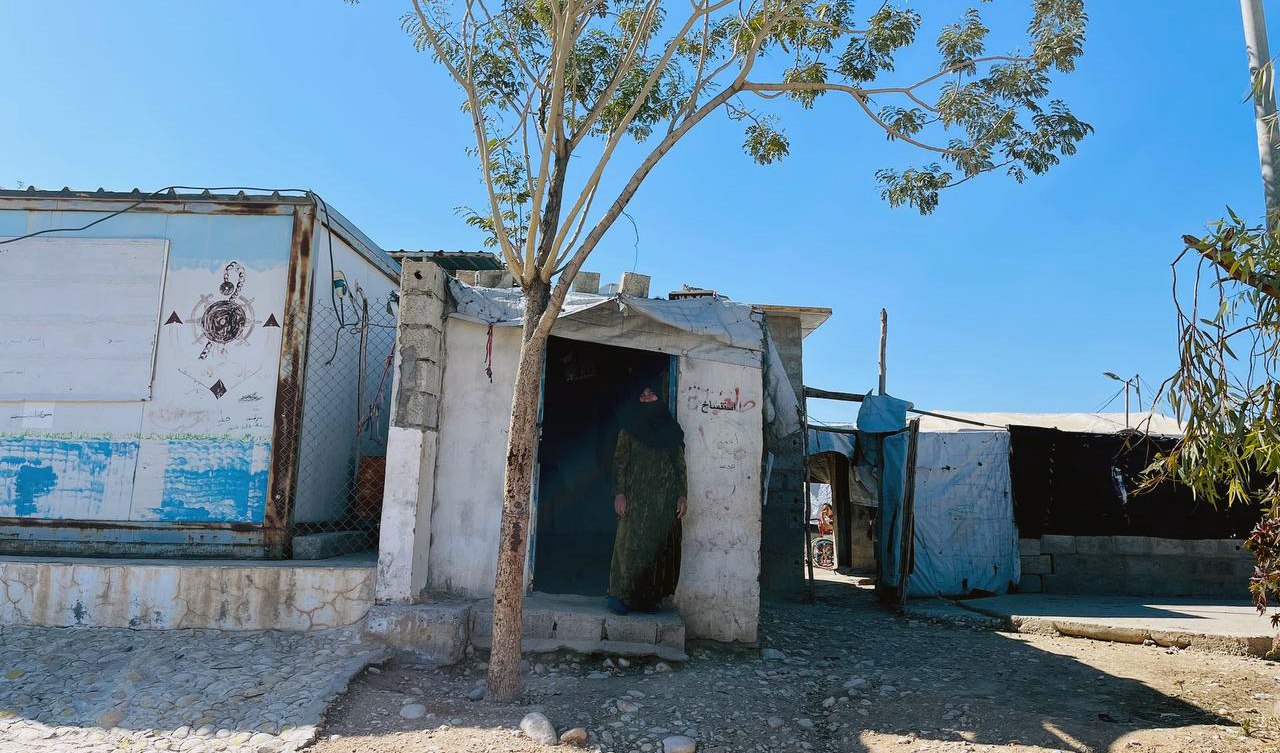"Where should I go back to? Our house has been flattened with the land, and its not safe for me," said Tahsina Muhammad, a displaced woman residing in Qora Too camp within the Garmian administration.
"I will not return to Saadiya even if they force me. If they close the camp, I will go to live in the neighboring villages.”
In the middle of 2014, when the war against the Islamic State of Iraq and the Levant (ISIL) began, the family of Tahsina faced hard times, and they had to vacate their house in Al-Sa’diya district of Diyala governorate and go to Kalar district in Sulaymaniyah governorate.
Nearly nine years after those events, Tahsina and her family members still live in the Qora Too camp for the Internally Displaced Persons IDPs in the Garmian administration of the Sulaymaniyah governorate.
Tahsina opened a small shop inside the camp to earn money for her living.
The insistence of Tahsina and thousands of other IDPs residing in the districts and districts of the Garmian administration to stay and not return to their homes comes at a time when the Iraqi government intends, within the framework of its ministerial platform, to close all camps, including those in the Iraqi Kurdistan Region IKR.
Ibrahim Dawood, a resident of Sharban district who lives in the same camp, said, "They do not offer us any compensation to encourage us to return. If the government does not help us, we will not be able to return to live in our areas."
If the government does not help us, we will not be able to return to live in our areas
In Garmian, there are two camps for the displaced, Qora Too and Taza De, in which 250 people reside, but in total there are more than 30,000 IDPs living among host communities in the towns and villages of the Garmian administration. The majority of are from Jurf al-Sakhar south of Baghdad, al-Sa’diya and Sharban in Diyala and Ramadi, center of Anbar province, west of Iraq on the borders with Syria.

A displaced family at Taza De camp for the displaced in Garmian, Sulaymaniyah, 2023. Parzhin Kamaran
Garmian (local) Administration which includes several districts and sub-districts between Sulaymaniyah and Diyala province is part of Sulaymaniyah Northern Province, one of the provinces of the IKR under the Kurdistan Regional Government KRG.
According to the KRG Ministry of Interior, there are 26 IDP camps in the IKR. About 664,000 IDPs live inside and outside camps of the KRG, official figures say.
According to joint coordination center of KRG, 54% of the IDPs in Kurdistan region are from Nineveh province, 14% from Salhaddin, 13% from Anbar beside many from Diyala, Baghdad and Kirkuk.
The IDPs' confirmation of the security risks in their areas comes at a time when Ahmed Zargoushi, the mayor of Sa'diya district, says that "the IDPs can return. The security conditions are currently very good in Sa'diya. Service projects have been started, and the returning IDPs will not face any problems."
"A committee was formed from the district's administration for the families whose homes were destroyed as a result of the war, an international organization would undertake the task of rehabilitating the destroyed houses,” he added.
In 2020, as part of its plan, the Iraqi government closed most of the IDP camps and returned the displaced to their areas, but this step did not include the displaced residing in the IKR.
Saber Mashkour, director of the Iraqi Ministry of Migration and Displacement office in Sulaymaniyah, says, "If the displaced are not convinced to return voluntarily, neither the Iraqi government nor the Kurdistan Regional Government can force anyone to return, except to explain to them the return process. We are now at this stage and we do not know how to solve this problem.”

The security situation in general, and the lack of housing and services are among the biggest obstacles to the return of the displaced in Garmian, as they confirmed themselves.
If the camps are closed and I am forced to return, I will pitch a tent outside the camp and live in it
Rahman Yassin, an IDP from Sharban, said, "If the camps are closed and I am forced to return, I will pitch a tent outside the camp and live in it."
Ahmed Saeed, another IDP from Ramadi, said, "The security situation in our region is unstable. Al-Hashid Al-Sha’bi (The pro Iran paramilitary of Popular Mobilization Forces PMF) are influential in those areas and create problems for people."
Stressing their determination to stay, the displaced people living in the camps face a number of problems, including the lack of aids provided by organizations and the Ministry of Migration and Displacement, which forces them to live outside the camps to secure a living.
"There are very few organizations that provide aids to the displaced in the region, and the lack of financial assistance has led to the health centers in the two camps stopping providing their services," said Beston Zhalayi, the humanitarian affairs official for the displaced in the Garmian administration.
Although the Iraqi Ministry of Immigration and Displacement distributes food baskets to the displaced from time to time, the livelihood of the displaced does not depend on this aid only, but they are forced to work to secure their livelihood.





